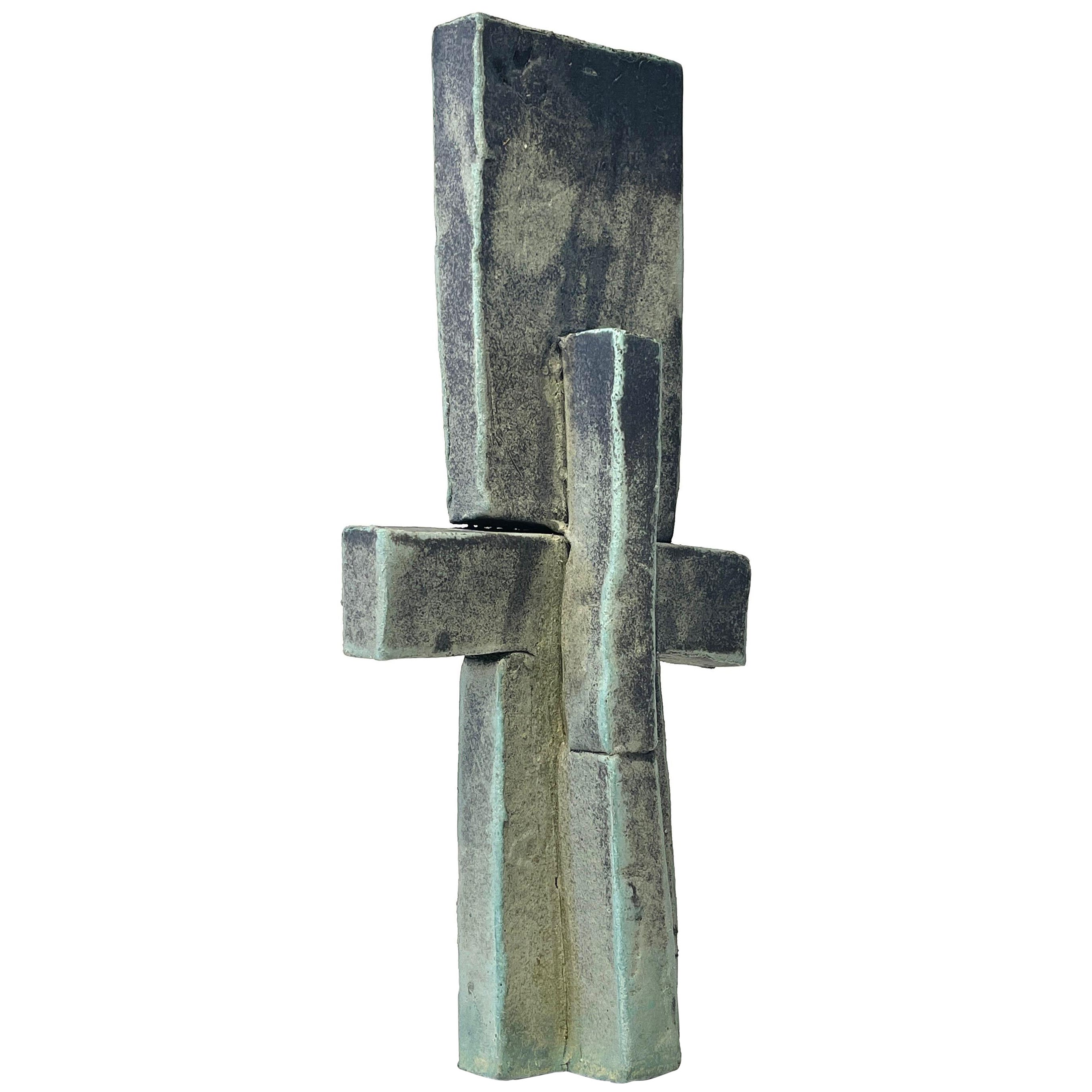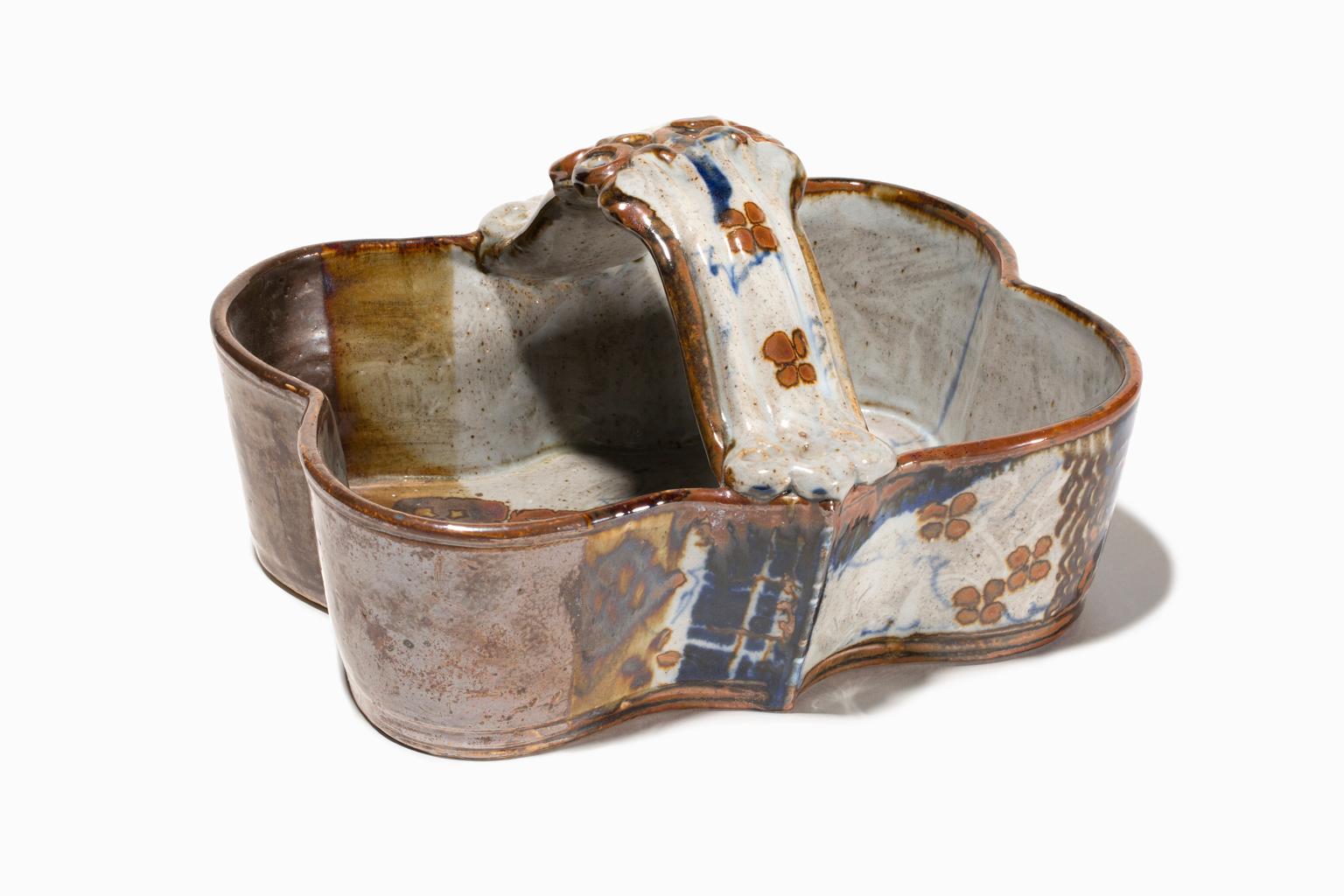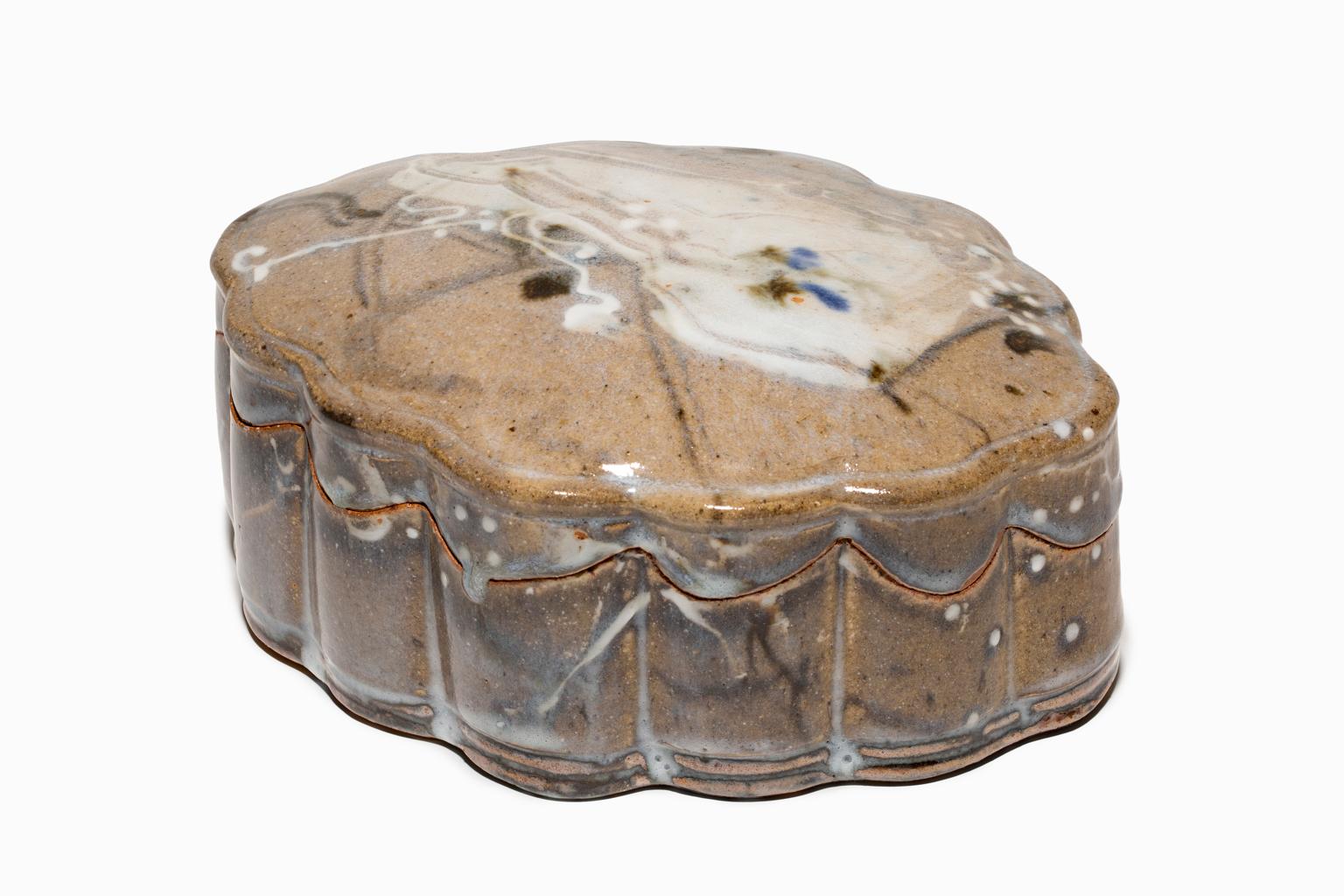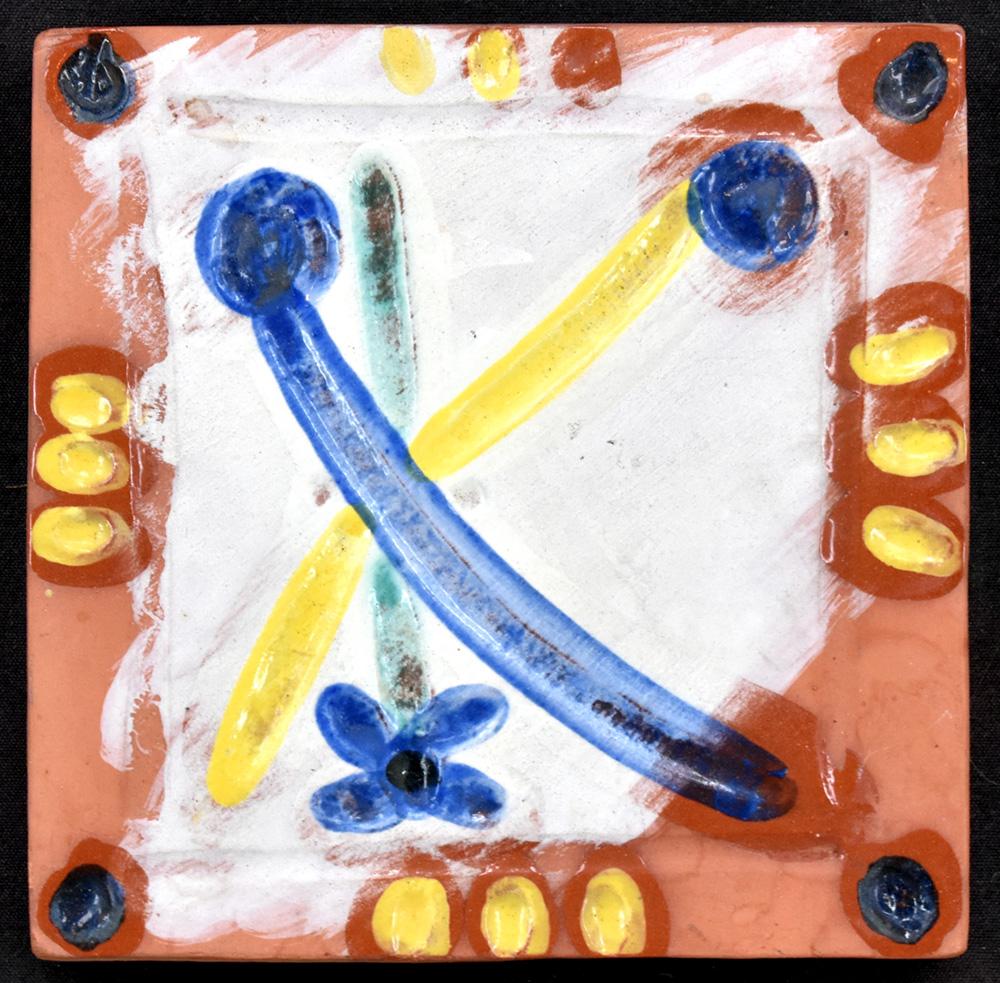Items Similar to Mid-Century Italian Ceramic Military Parrot Bust
Want more images or videos?
Request additional images or videos from the seller
1 of 9
UnknownMid-Century Italian Ceramic Military Parrot Bust1970
1970
About the Item
Whimsical glazed ceramic classical bust depicting a parrot with a humorous expression wearing a military uniform with aplomb. Marked Italy on the bottom.
- Creation Year:1970
- Dimensions:Height: 22.5 in (57.15 cm)Width: 10 in (25.4 cm)Depth: 8 in (20.32 cm)
- Medium:
- Movement & Style:
- Period:
- Condition:
- Gallery Location:Palm Beach, FL
- Reference Number:
About the Seller
No Reviews Yet
Vetted Seller
These experienced sellers undergo a comprehensive evaluation by our team of in-house experts.
1stDibs seller since 2021
16 sales on 1stDibs
Typical response time: 4 hours
- ShippingRetrieving quote...Ships From: Palm Beach, FL
- Return PolicyThis item cannot be returned.
More From This SellerView All
- Glazed Terra Cotta Big Cat Sculptural Wall MountLocated in Palm Beach, FLOne of mother nature's most iconic designs, the big cat. Here we present a terra cotta wall mounted head decorated and glazed, a leopard depicted wit...Category
Mid-20th Century Modern Sculptures
MaterialsTerracotta, Glaze
- Italian Terra Cotta Rhinoceros SculptureLocated in Palm Beach, FLMid century rhinoceros sculpture crafted in terra cotta with a white crackle glaze.Category
Mid-20th Century Modern Sculptures
MaterialsTerracotta, Glaze
- Glazed Terra Cotta Prancing Horse SculptureLocated in Palm Beach, FLTerra cotta horse sculpture or object of art decorated in holiday attire under glaze. Signed made in Italy on the bottom.Category
Mid-20th Century Modern Sculptures
MaterialsTerracotta, Glaze
- Facing Pair of Early to Mid-20th Century Regal, Majolica Lion FiguresLocated in Palm Beach, FLA pair of very regal seated Majolica lions, a white glaze over a terracotta base, great condition, with some of the terracotta showing through the glaze,...Category
Mid-20th Century Other Art Style Sculptures
MaterialsMajolica, Glaze, Terracotta
- Mid-Century Glazed Terra Cotta Dachshund or Dog SculptureLocated in Palm Beach, FLItalian terra cotta dachshund or doggy with a white glaze and realistic form ready to be rescued.Category
Mid-20th Century Other Art Style Sculptures
MaterialsTerracotta, Glaze
- Mid-Century Italian Glazed Terra Earthenware French Bulldog SculptureLocated in Palm Beach, FLVintage Italian French bulldog statue or sculpture crafted in terra cotta with a white glaze and glass eyes.Category
Mid-20th Century Sculptures
MaterialsTerracotta, Glaze
You May Also Like
- 'Cross Reference' Weathered Bronze Ceramic SculptureBy Judy EngelLocated in Hudson, NYJudy Engel Cross Reference 2019 Glazed Ceramic Greatly influenced by the modernism of the middle of the 20th century, Judy's first introduction to this style was the Empire Stat...Category
21st Century and Contemporary Modern Abstract Sculptures
MaterialsCeramic, Glaze
- Breathtaking John Glick "Scalloped Basket" Glazed Stoneware Reduction FiredLocated in Detroit, MI"Scalloped Basket" is a stoneware piece with the decorative layer of the rich toned glazes and markings that John was so well-known for. He was, also, known for the undulating lip lines on his exquisite pieces. The basket portion is shaped with gentle curves and a sculptural handle. Each piece that John produced was unique. He was seduced by the effects of the reduction kiln, which decreased the levels of oxygen during firing, inducing the flame to pull oxygen out of the clay and glazes changing the colors of the glazes depending on their iron and copper content. In this way he achieved the rich gradients of ochre and umber and variations in stippling and opacity. This particular "basket" also has the cool blues and grays that contrast with the umber. It is signed and stamped on the bottom. John was an American Abstract Expressionist ceramicist born in Detroit, MI. Though open to artistic experimentation, Glick was most influenced by the styles and aesthetics of Asian pottery—an inspiration that shows in his use of decorative patterns and glaze choices. He has said that he is attracted to simplicity, as well as complexity: my work continually reflects my re-examination that these two poles can coexist… or not, in a given series. Glick also took influences from master potters of Japan, notably Shoji Hamada and Kanjrio Kawai, blending their gestural embellishments of simple forms with attitudes of Abstract Expressionism. He was particularly drown to the work of Helen Frankenthaler whose soak-stain style resonated with Glick’s multi-layered glaze surfaces, which juxtaposed veils of atmospheric color with gestural marks and pattern. He spent countless hours developing and making his own tools in order to achieve previously unseen results in his work with clay and glaze. Glick’s “Plum Tree Pottery...Category
1970s American Modern Abstract Sculptures
MaterialsStoneware, Glaze
- John Glick Plum Street Pottery Glazed Bowl Reduction FiredLocated in Detroit, MI"Untitled" is a stoneware piece with the decorative layer of the rich toned glazes and markings that John was so well-known for. Each piece that John produced was unique. The lip on this piece is slightly scalloped and the shape is removed from the boring circular to mimic a gentle geometric design. He was seduced by the effects of the reduction kiln, which decreased the levels of oxygen during firing, inducing the flame to pull oxygen out of the clay and glazes changing the colors of the glazes depending on their iron and copper content. In this way he achieved the rich gradients of ochre and umber and variations in stippling and opacity. This piece is signed and stamped on the bottom. John was an American Abstract Expressionist ceramicist born in Detroit, MI. Though open to artistic experimentation, Glick was most influenced by the styles and aesthetics of Asian pottery—an inspiration that shows in his use of decorative patterns and glaze choices. He has said that he is attracted to simplicity, as well as complexity: my work continually reflects my re-examination that these two poles can coexist… or not, in a given series. Glick also took influences from master potters of Japan, notably Shoji Hamada and Kanjrio Kawai, blending their gestural embellishments of simple forms with attitudes of Abstract Expressionism. He was particularly drown to the work of Helen Frankenthaler whose soak-stain style resonated with Glick’s multi-layered glaze surfaces, which juxtaposed veils of atmospheric color with gestural marks and pattern. He spent countless hours developing and making his own tools in order to achieve previously unseen results in his work with clay and glaze. Glick’s “Plum Tree Pottery...Category
1970s American Modern Abstract Sculptures
MaterialsStoneware, Glaze
- Magnificent John Glick Plum Street Pottery "Scalloped Box" Glazed StonewareLocated in Detroit, MIThis magnificent "Scalloped Box" is a stoneware piece with decorative layers of rich toned glazes and markings that John was so well-known for. He was, also, known for the undulating lip lines on his exquisite boxes that fit together like a puzzle. Each piece that John produced was unique. He was seduced by the effects of the reduction kiln, which decreased the levels of oxygen during firing, inducing the flame to pull oxygen out of the clay and glazes thereby changing the colors of the glazes depending on their iron and copper content. In this way he achieved the rich gradients of ochre and umber and variations in stippling and opacity. This piece is signed and stamped on the bottom. John was an American Abstract Expressionist ceramicist born in Detroit, MI. Though open to artistic experimentation, Glick was most influenced by the styles and aesthetics of Asian pottery—an inspiration that shows in his use of decorative patterns and glaze choices. He has said that he is attracted to simplicity, as well as complexity: my work continually reflects my re-examination that these two poles can coexist… or not, in a given series. Glick also took influences from master potters of Japan, notably Shoji Hamada and Kanjrio Kawai, blending their gestural embellishments of simple forms with attitudes of Abstract Expressionism. He was particularly drown to the work of Helen Frankenthaler whose soak-stain style resonated with Glick’s multi-layered glaze surfaces, which juxtaposed veils of atmospheric color with gestural marks and pattern. He spent countless hours developing and making his own tools in order to achieve previously unseen results in his work with clay and glaze. Glick’s “Plum Tree Pottery...Category
Late 20th Century American Modern Abstract Sculptures
MaterialsStoneware, Glaze
- Face, 1968-1969By Pablo PicassoLocated in Palo Alto, CAA whimsical portrait in vivid colors, this work appeals to our response to color, texture, depth and space. There is a wonderful interplay between ...Category
1960s Modern Figurative Sculptures
MaterialsEarthenware, Glaze, Clay
- Visage de femme (Woman's Face), 1953By Pablo PicassoLocated in Palo Alto, CAPablo Picasso ceramic Visage de femme (Woman's Face), 1953 is a vibrantly colored pitcher decorated with contrasting saturated greens against chestnut ...Category
1950s Modern Figurative Sculptures
MaterialsClay, Ceramic, Earthenware, Glaze, Engraving
Recently Viewed
View AllMore Ways To Browse
Mid Century Modern Italian Sculptures
Italian Classical Sculptures
Italian Glazed Ceramic Sculpture
Humorous Sculpture
Military Uniforms
Used Military Uniforms
Parrot Sculpture
Italian Parrots
Italy Parrots
Italian Parrot
Gray Parrot
Vintage Ceramic Bust
Glazed Parrots
Glazed Parrot
Retro Ceramic Parrots
21st Century Found Objects Sculpture
Pop Culture Art Sculpture
Large Life Size Sculpture





